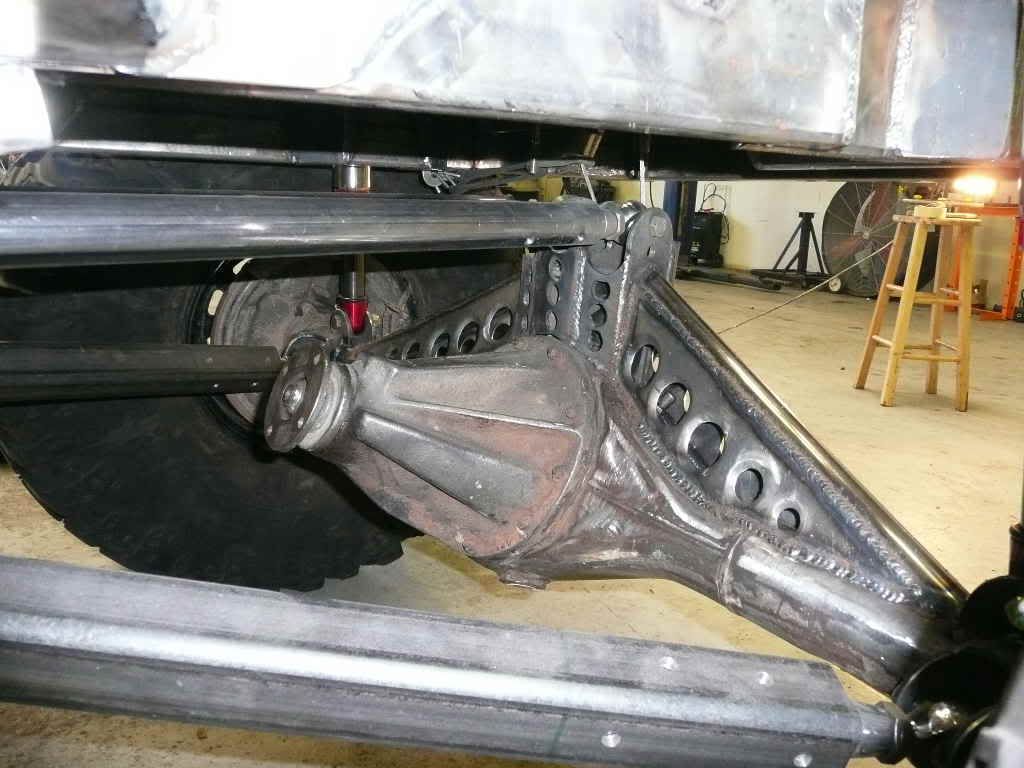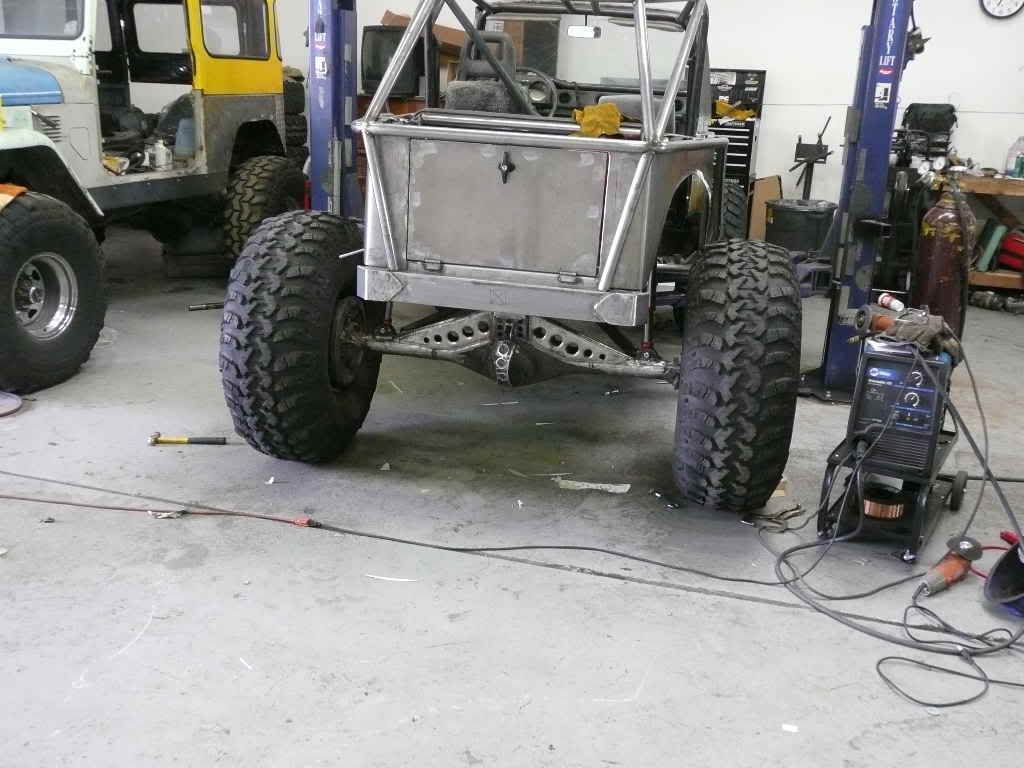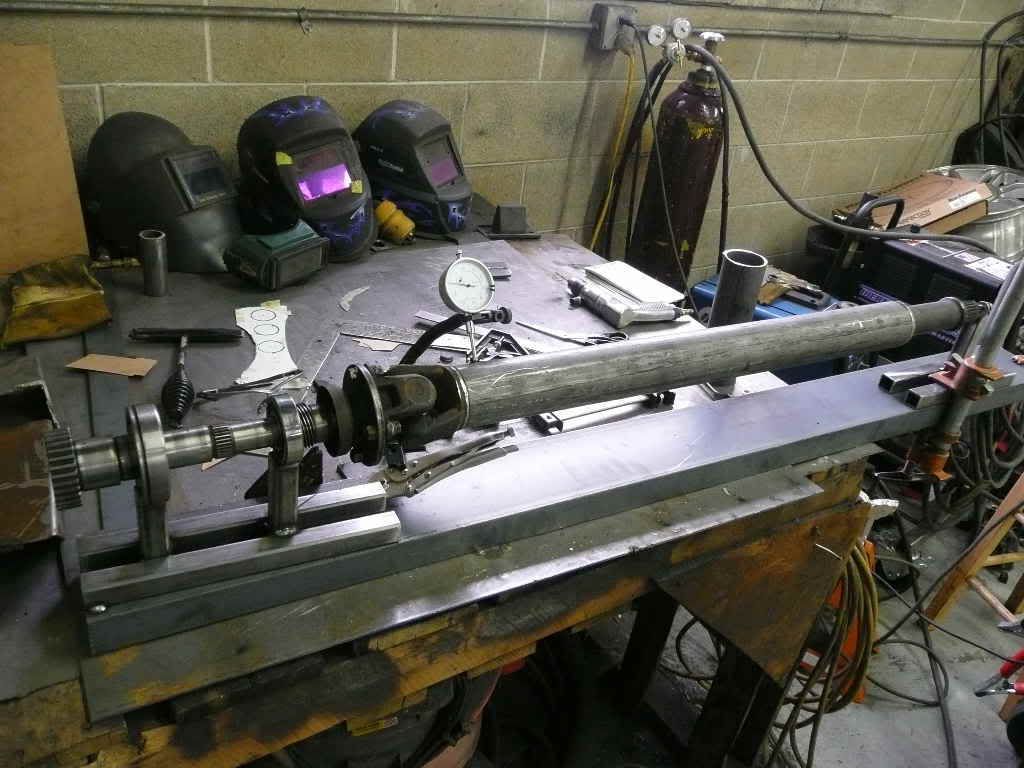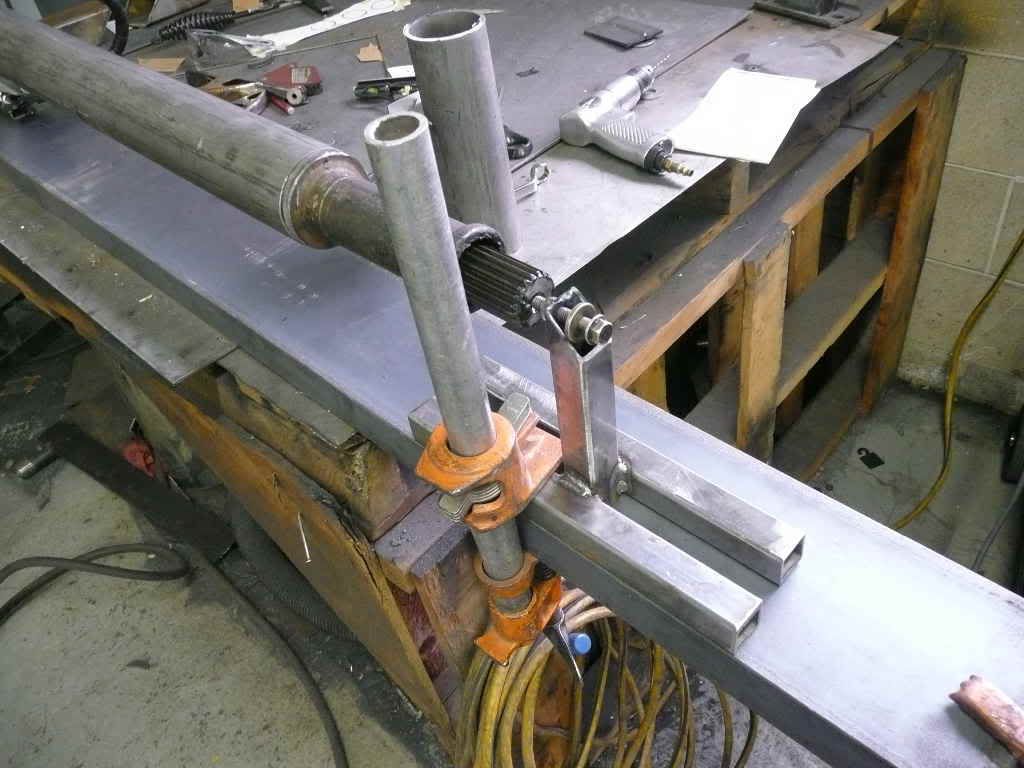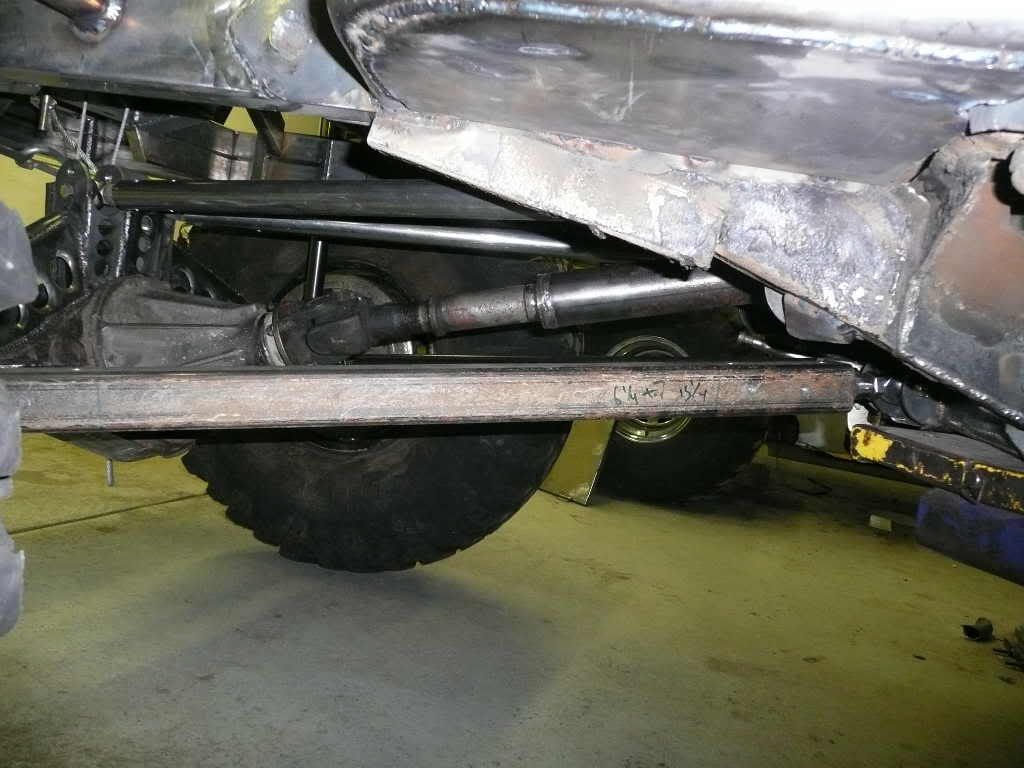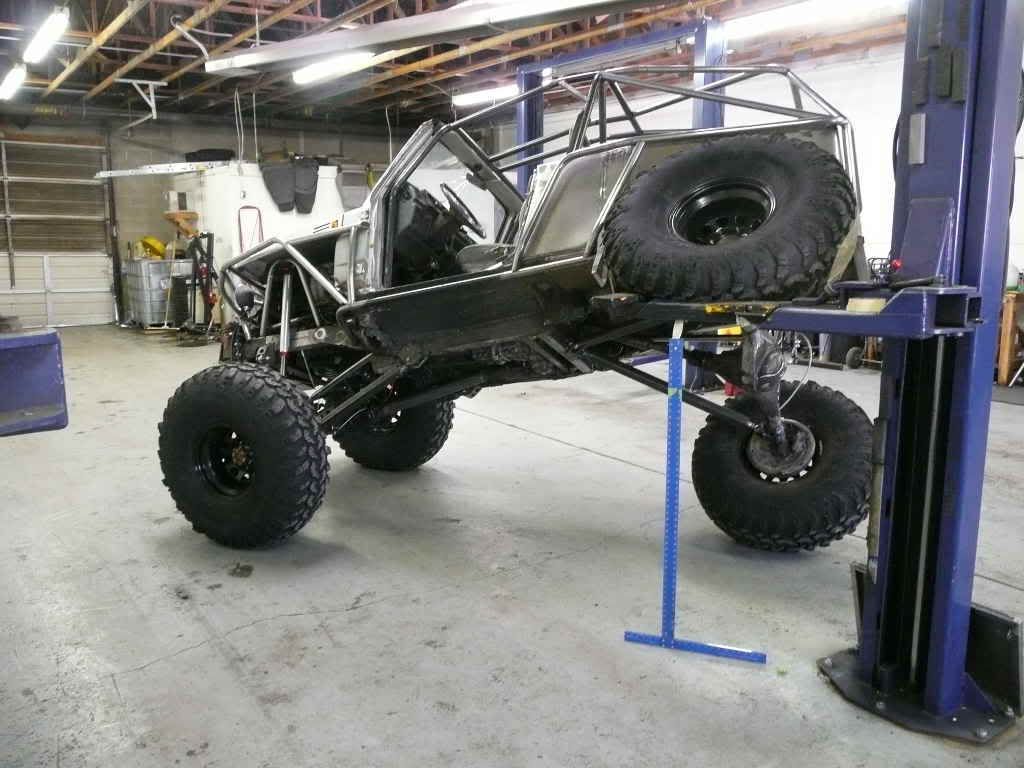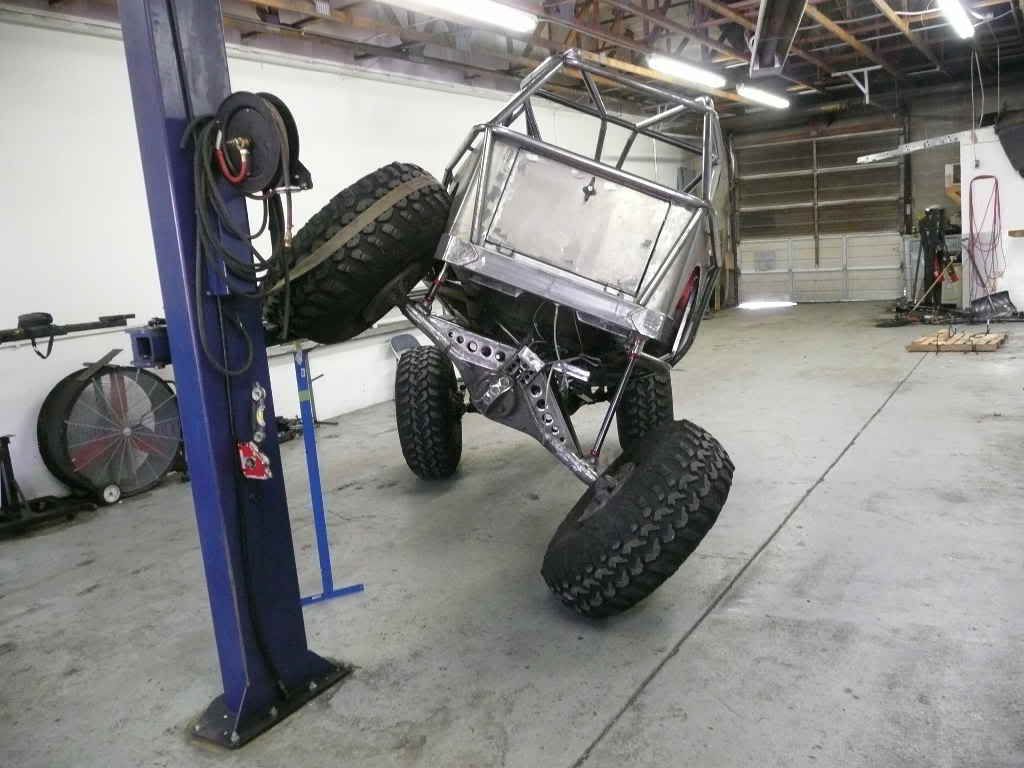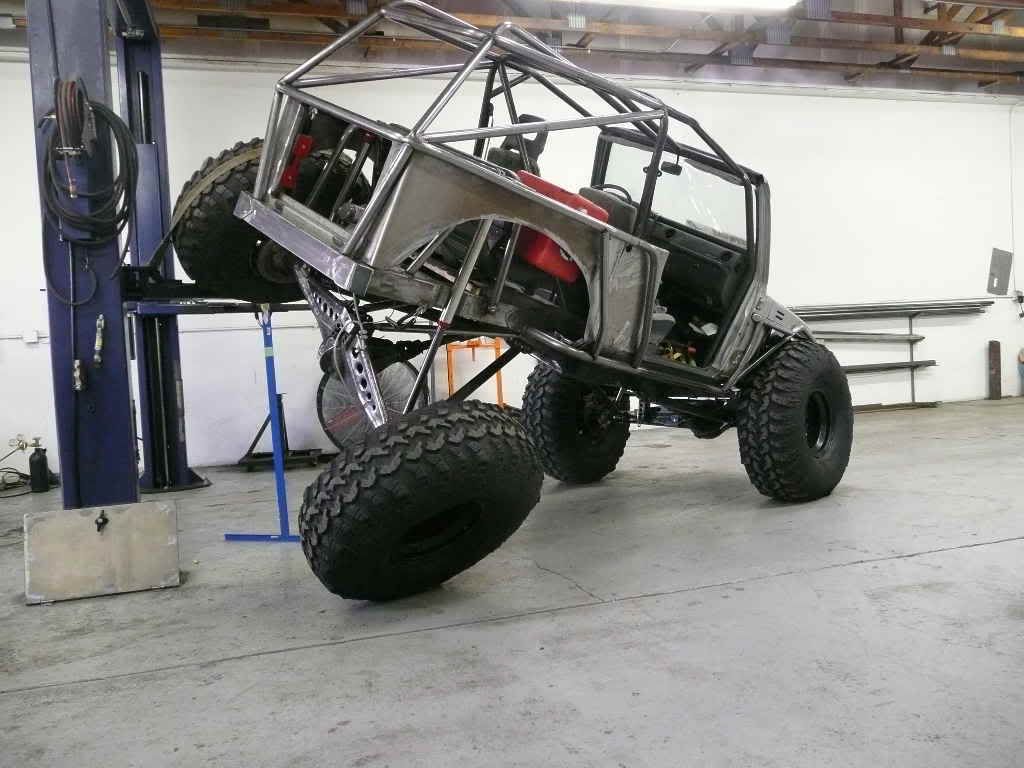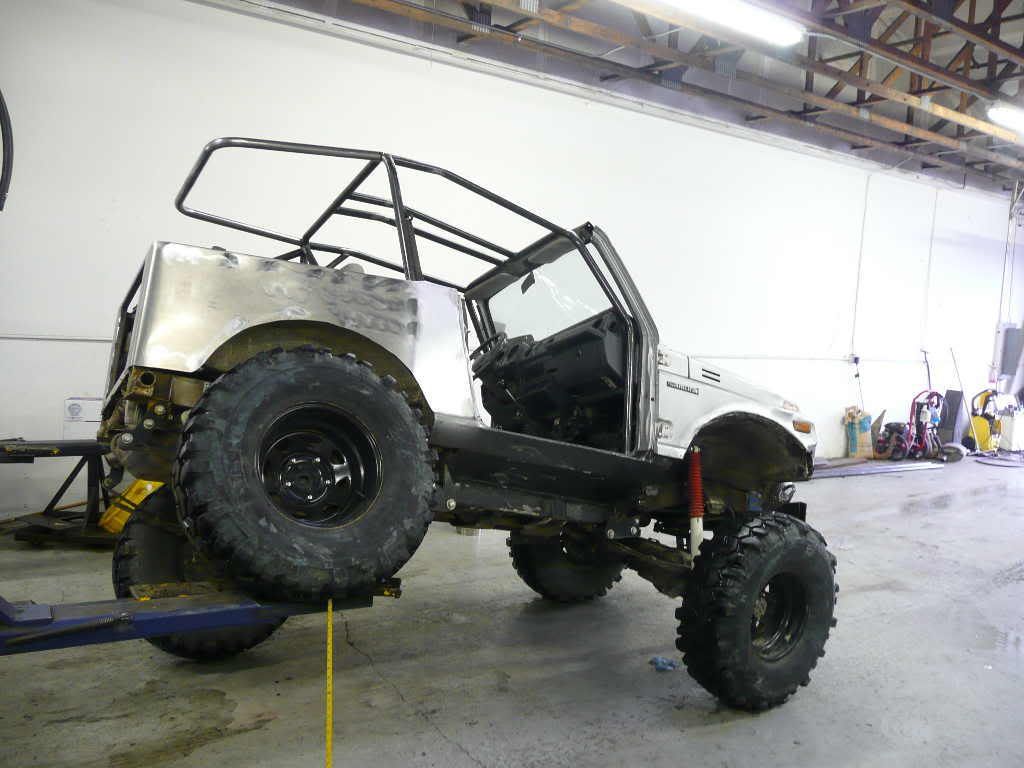Ok, I new I needed some drivelines but didn't want to fork over the $$$ so here's what I did.
First, I grabbed some cores out from under my '84 parts Toy pickup, and found that the stock rear driveline was nearly perfect for the front of my application except that it was ~1" to long Doh! So I cut the yoke end off to shorten it and found that the factory tube is like paper thin (0.067" I think), I knew that it wouldn't last over one rock so, off to Driveshafts Utah for some high-carbon-steel dom seamless tubing. This stuff is .120 wall so it should hold up a little better. (a little not a lot)
So I cut the slip spline off the old tube and set about making a driveline jig. Like the ones I've seen others like 4rnrRick use.
It's just the spare output shaft and some bearings left over from my dual t-case set-up, with the spare output flange bolted to the end.
The other end is just a nut welded in some 1" square tube and a bolt. The whole thing is sitting on a piece of channel but, a flat bench (not like mine) or other flat surface works. You just need to have something you can clamp it to.
This set up allows you to rotate the driveshaft with a dial-indicator attached to the base and acurately measure runout. And you can ground your welder thru the bolt end and not worry about welding thru your u-joints. I was suprized at how far off my "eyeball" strait shaft was once the first measurements were taken.
With a little tap-tap from the hammer and a little time you'll have a nice straight/true driveshaft.
A couple tips I learned in the process, before you cut the ends off your tube make a strait mark all the way from one end to the other, that way you can keep your yoke lined up with your slip splines and keep your shaft ends "in-phase". Then, cut the ends off. Next, make a strait line down the new tube and line that up with the marks you made earlier on the yoke and slip splines.
Mount the shaft into the spinning jig. Get one end strait go to the other then back to the first and then back and so on till you have very little to no run-out then start tacking. Make sure you do your tacks in a cross pattern as the heat will move things around a bit. Start with just the smallest tacks on opposite sides, once you have all four opposing sides tacked on both ends you can go back and start to build your welds up, continuing the crossing pattern. Before you know it you'll have a nice strait shaft and will have saved yourself some $$$.

